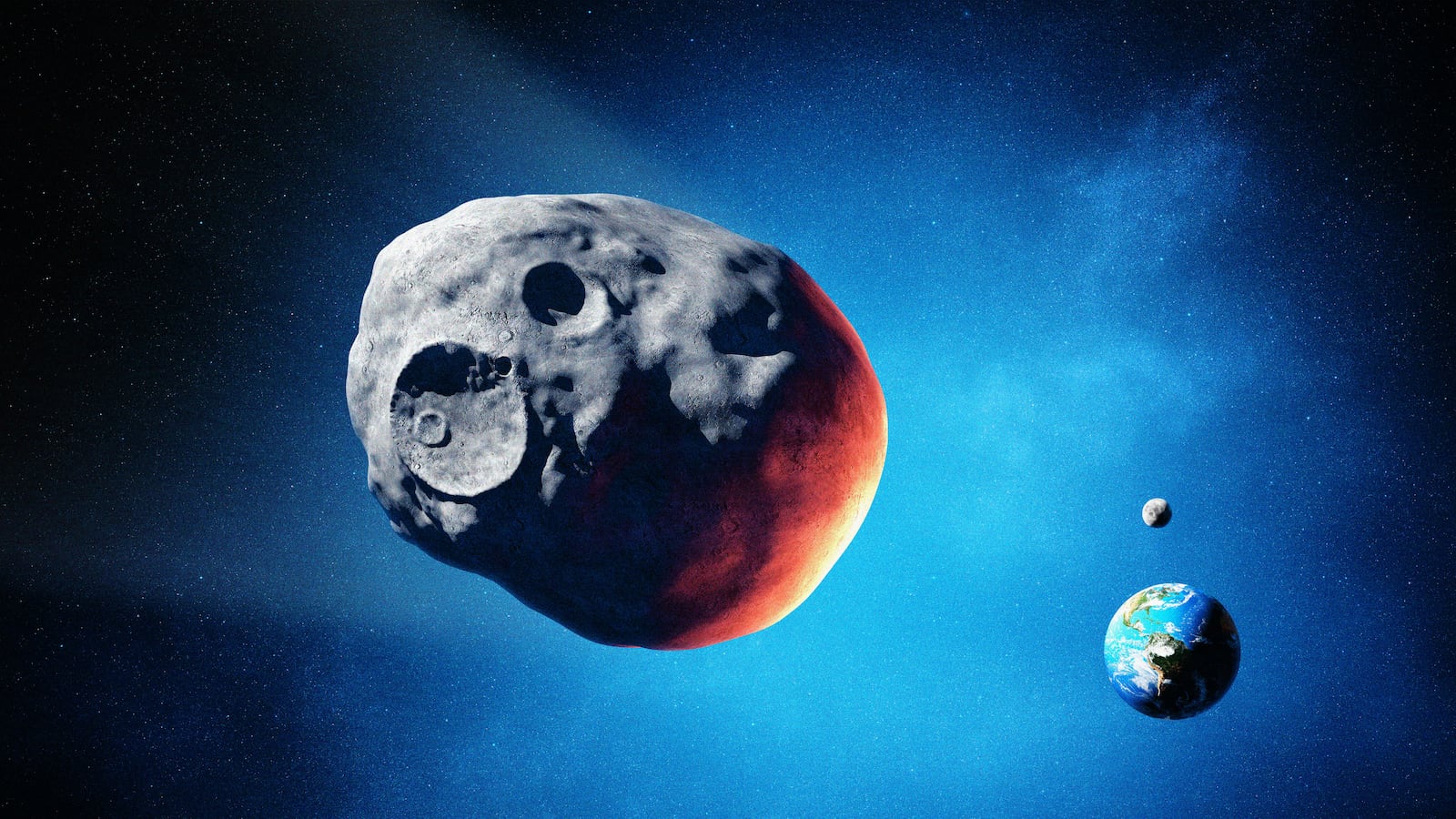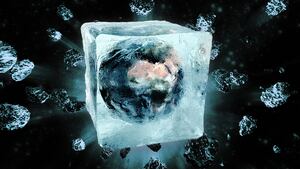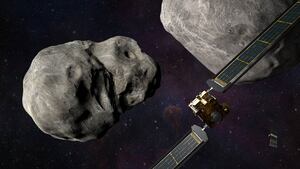It’s not really a question of whether a massive asteroid—one big enough to wipe out human civilization—will fall into a collision course with Earth. It’s a question of when.
NASA estimates a 1,000-foot-wide asteroid, big enough to flatten a city, hits our planet every 70,000 years or so. Half-mile-wide rocks, capable of killing much of the life on Earth, strike every 700,000 years.
Anticipating the inevitability of a catastrophic impact, scientists are scrambling to devise methods of detecting—then destroying or deflecting—an incoming space rock. The best solution might still be the most obvious: nuke it. Just like Bruce Willis’s miner-turned-astronaut did in the 1998 movie Armageddon.
But when we nuke a planet-killing rock matters, according to one Hungarian-Ukrainian science team. For the biggest and most dangerous incoming asteroids, it’s important to wait until the proverbial last second—just a couple of years ahead of impact—before blowing them up, according to Zsolt Regály, Viktória Fröhlich, Peter Berczik, respectively from the Konkoly Observatory and Eötvös Loránd University in Hungary and the National Academy of Sciences of Ukraine.
Their math is complicated: it takes into account an asteroid’s likely path through the solar system and the effects of gravity from the sun, Earth and neighboring planets. But their conclusion is simple: Shatter a space rock too soon, and it might just turn into a bunch of smaller rocks that would still hit Earth like a blast of shotgun pellets instead of a single big bullet.
“The number of fragments hitting the Earth is strongly influenced by the orbit of the impactor and the time of interception,” Regály, Fröhlich and Berczik wrote in their peer-reviewed study, which appeared in Astronomy & Astrophysics in early August. “To minimize the lethal consequences of an… impact, a well-constrained interception timing is necessary.”
There are two broad categories of asteroids whose oblong orbits around the sun have the potential to intersect with Earth’s own orbit: the Atens and the Apollos. The roughly 1,100 Aten asteroids that astronomers have identified need less than a year to orbit the sun. The 18,000 or so known Apollo asteroids take more than a year.
For any Atens or Apollos that look like they might hit Earth, the best time to blow them up is when they’re at their respective pericenters—the spot along their oval-shaped orbits that’s closest to the thing they’re orbiting around. In this case, that means hitting them when they are nearest to the sun. And at their pericenters, these rocks are quite close to Earth, too.
Once it pops, shattered from the inside by a multi-megaton atomic device, an asteroid will spread out in an egg-shaped cloud of fragments. “The idea is that if you blow up an asteroid at the perfect time then, due to orbital dynamics, the asteroid cloud grows larger than Earth’s diameter—which means just part of the fragments will hit Earth,” Regály told The Daily Beast.
And the fragments should hit one or a few at a time, hours or days apart, Regály added. “Each impactor is small.”
If the planet intersecting with the whole cloud of fragments all at once is like a person taking a shotgun blast to the torso, then the planet grazing just some of the fragments, and at the right angle, is like getting shot with one tiny pellet at a time—and with a breather between hits. “If the fragments are small enough, this might be okay,” William Bottke, an expert in asteroids at the Southwest Research Institute in Colorado, told The Daily Beast.
The problem, of course, is that waiting is scary: taking the best shot at a dangerous asteroid might also require us to watch that asteroid barrel toward us for years or even decades. An extinction-level game of chicken.
Worse, if our belated attempt to blow up the asteroid fails, we might not have much time left to figure out a plan B. “You will have more options if you blow it up early rather than late,” Bottke said. “If you blow it up late, you need big ejection velocities to get the most of the mass to miss Earth, and that is hard.”
“Ejection velocity” in this context basically means how hard we blow up an asteroid. If we wait to blast a dangerous space rock, we might also need to build a very big bomb.
There’s an alternative to blowing up a potentially civilization-ending asteroid. Last year, NASA rammed a refrigerator-sized probe into a non-threatening asteroid nearly seven million miles from Earth, as a test. The theory is that the impact will nudge the rock just enough to change its orbit—and prevent a planetary impact.
It’s too soon to say whether NASA’s Double Asteroid Redirection Test mission succeeded in significantly altering the target asteroid’s path. But nudging is probably a better defense than nuking, Richard Binzel, a professor of planetary science at the Massachusetts Institute of Technology, told The Daily Beast. “Bruce Willis’s intercept and last-minute disintegration of an incoming asteroid is fine Hollywood entertainment,” Binzel said, “but it’s a last resort for mitigating any real asteroid threat.”
As a bonus, a deflection effort like DART is repeatable. Yes, each nudge could create a few fragments. But far fewer than would result from a nuclear demolition. Non-explosive deflection missions “can be repeated, in case a first try is not successful or proves insufficient,” Binzel said. And we could start attempting them the moment we detect a dangerous asteroid, rather than waiting until the terrifying last moment.
But it’s possible we’re underestimating, by a lot, how much force it takes to nudge away a planet-wrecking asteroid. “It’s really hard,” Regály said. “It requires a large amount of energy. It’s much easier to blow up an asteroid.”
In the worst-case scenario—a civilization-ending asteroid heading for a direct impact with Earth, perhaps just a few decades after we first spot it—we might not have any good options. Just different bad ones.
Our choices might come down to: waiting on, and gambling big on, a powerful nuclear demolition that prevents global catastrophe—but at the cost of a few cities and potentially millions of lives; or trying, year after year, to deflect the rock. Repeated redirection efforts that could result in repeated redirection failures until we finally realize a giant last-minute bomb was the least-worst option all along.







